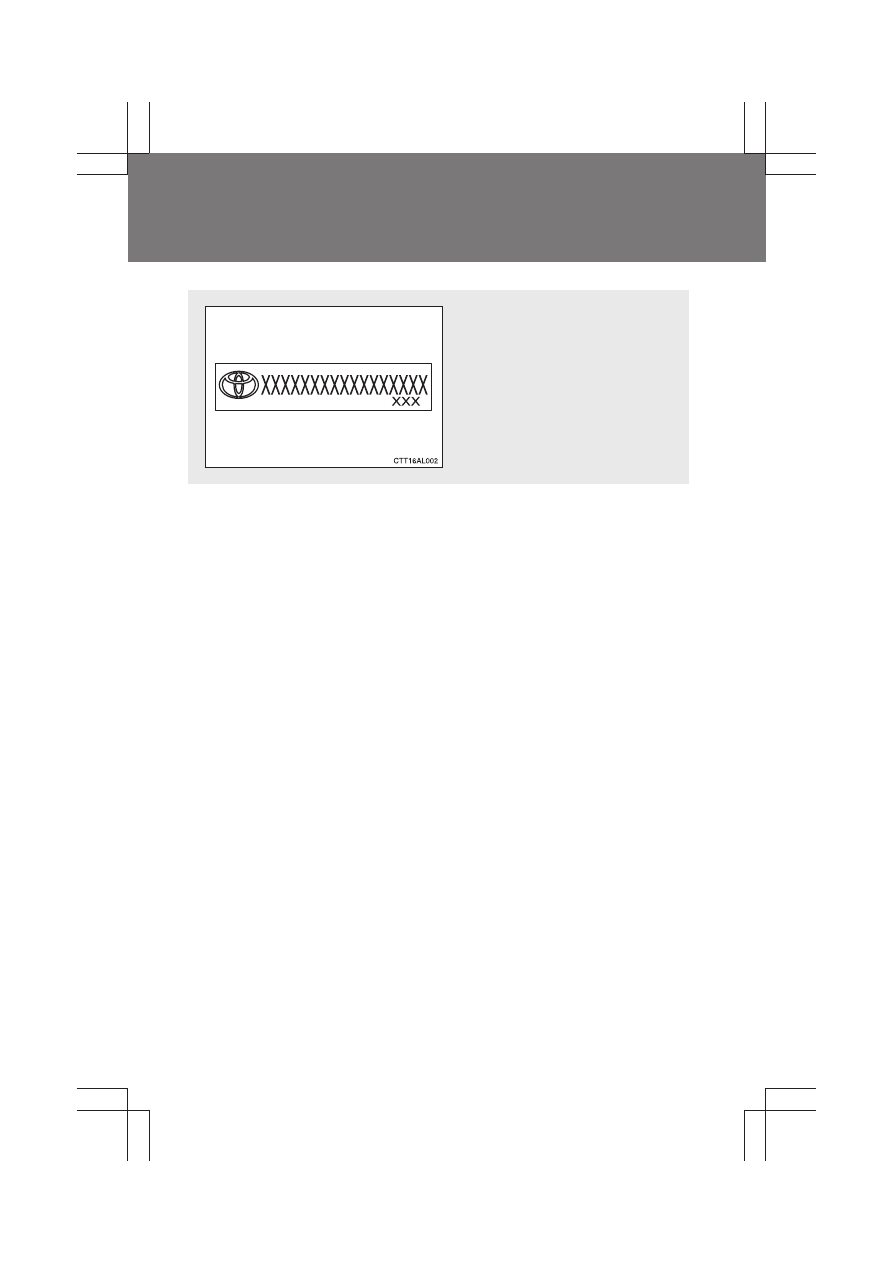Toyota Matrix (2014 year). Instruction - part 5

70
1-6. Theft deterrent system
MATRIX_U
Theft prevention labels (except for Canada)
These labels are attached to
the vehicle to reduce vehicle
theft by facilitating the tracing
and recovery of parts from sto-
len vehicles. Do not remove
under penalty of law.